2024年,青科会再度登上《Nature》!
2月29日,《Nature》刊登了《Young scientists’ summit looks to sustainable future》一文,用英文向全球科技工作者介绍青科会。3月4日,《Nature》官方微信平台用中文点赞“世界青年科学家峰会展望可持续发展未来”。
在2023年,青科会执委会就与《Nature》建立合作关系,并于2023年10月26日在《Nature》官微推出“青年科学家峰会—共启成长之路”中英文报道。
《Nature》杂志页面
《Nature》官方微信截图
《Nature》杂志文章全文
Young scientists’ summit looks to sustainable future
Hundreds of early- and mid-career scientists from around the world gathered in China for an exchange of ideas in late 2023. new research awards for sustainable development were a notable focus.
The fifth World Young Scientist Summit (WYSS) was held in Wenzhou, China in November. Credit: WYSS
Young minds have the power to revolutionize the world. At the age of 23, Isaac Newton contemplated the law of gravity beneath an apple tree. In her early 30s Chien-Shiung Wu played a pivotal role in the Manhattan Project, helping the United States win the race to develop the first atomic bomb. Albert Einstein, at the age of 26, made four groundbreaking discoveries in physics, including his special theory of relativity. Marie Curie, while still in her 20s in Paris, discovered polonium and radium.What young scientists lack in experience, they make up for with fresh perspectives and an ability to tackle problems unconstrained by dogma and convention, says biologist Xiaokun Li, president of Wenzhou Medical University in Zhejiang, China.This appreciation for young scientists led Li and his long-term collaborator — structural biologist, Moosa Mohammadi of Oujiang Laboratory in Wenzhou — to get involved with the World Young Scientist Summit (WYSS), an event held annually in Wenzhou, aimed at fostering these young minds.The fifth iteration of WYSS, held on 11–12 November 2023, was centered around ‘Youth Innovation for a Sustainable Future’. It was co-organized by the China Association for Science and Technology and the People’s Government of Zhejiang Province.
A call for unity
“We find ourselves at a crossroad where the future hinges on science,” says Li. “To tackle pressing challenges such as climate change we are now facing, it is imperative for young scientists to collaborate on sustainable and ethical solutions.”
In 2023 the World Young Scientist Summit (WYSS) focused on sustainable development. Recipients are presented with their Young Scientist SDGs Awards. Credit: WYSSThe 2023 Summit attracted around 800 attendees from around the world. The majority were early- and mid-career researchers under the age of 45, but the attendees also included Nobel laureates and senior representatives from international scientific and technological organizations. This diverse group provided a platform for younger scientists to learn from established experts in areas such as fundraising, research translation, and leadership, according to Li.The event showcased a series of forums and workshops where young scientists presented their research in key areas such as artificial intelligence, advanced energy materials, brain science, and public health, along with solutions for a sustainable future.The event emphasized forums aimed at fostering equity for female scientists and promoting collaboration between young researchers in China and Europe. It also introduced the inaugural ‘Young Scientist SDGs Award’ to recognize significant research contributions towards achieving any of the United Nations’ 17 Sustainable Development Goals.
SDG pathfinders
Selected from among 80 candidates in 35 countries and regions, three early career researchers were awarded a prize of one million RMB (US$140,000). Among the recipients was Henry Snaith a physicist at the University of Oxford, in the United Kingdom.He was recognized for his work on improving perovskite photovoltaic cells, while minimizing the environmental impact of sourcing raw materials and manufacturing.
Henry Snaith, a physicist at the University of Oxford, was awarded for his work on perovskite solar cells. Credit: WYSS
In collaboration with Tsutomu Miyasaka, from the University of Yokohama in Japan, Snaith dedicated more than a decade to refining ‘solar absorber’ materials in photovoltaic devices, aiming for their large scale deployment.“There can’t be very many things more important than enabling society to grow and prosper in a sustainable manner,” said Snaith. “My ultimate hope is that the perovskite photovoltaic technology contributes significantly to the decarbonization of power generation.”To Snaith the value of a conference dedicated to young scientists is clear.“Research communities are often heavily influenced by a few very well-established leaders,” he says, but a summit such as WYSS — with its focus on young scientists — makes space for new and unconventional ideas to emerge and flourish.Xiongwen (David) Lou, a materials scientist from the City University of Hong Kong, shares this vision. He was honored with a Young Scientist SDGs Award for his work on developing efficient, cost-effective, and environmentally friendly nanomaterials for energy storage and conversion systems.These advanced materials have numerous potential applications in electrochemical capacitors, rechargeable batteries, fuel cells, hydrogen production, and CO2 reduction to combat carbon emissions.“It is a privilege to be acknowledged for making contributions to a sustainable future,” says Lou. He anticipates that the recognition brought by the award will open doors for collaboration with scientists across various disciplines.The third winner, material scientist Qiang Zhang of Tsinghua University in Beijing, has been developing advanced materials for rechargeable lithium batteries. Zhang says his research is “a humble, yet pivotal contribution to the broader narrative of energy transformation”.Zhang teaches the ’Chemical Engineering for Global Challenges’ course at Tsinghua University. This is designed to “empower students to proactively combat climate change,” he says.“Let this award serve as a reminder that collective actions, no matter how small, can spearhead significant change,” adds Zhang.
Finding solutions
Another way the WYSS meeting is facilitating changes is through a series of initiatives aimed at fostering international collaboration. These include three sub-forums in New York, Brussels and Dubai, which took place before or after the main WYSS meeting in Wenzhou.
In November in Wenzhou, the ‘China–Europe Young Scientists Dialogue’ and the ‘Sino-Nordic Sustainable Development Forum for International Cooperation’ were held, focusing on nurturing bilateral research collaborations to tackle global challenges and boost sustainable development.Discussions at this year’s forums have resulted in collaborative research projects between Wenzhou Medical University and several universities and research institutes in Scandinavia, all aimed at tackling pressing public health challenges.Meanwhile, the popular “Forum for Female Scientists”, was attended by 200 young scientists from many countries.As for the future of WYSS events, Li envisions them growing continuously, becoming an increasingly important source of solutions to global challenges.For example, one of the upcoming forums may centre on developing responses to future pandemics.“Investing in young scientists equates to investing to our future,” says Li.
Learn more about the 2023 instance of the World Young Scientist Summit.
《Nature》官方微信文章全文
2023年底,来自世界各地的数百名中青年科学家齐聚中国交流思想。大会上首次揭晓的“可持续发展青年科学家奖”格外引人瞩目。
第五届世界青年科学家峰会于2023年11月在中国温州举办。来源:WYSS年轻的头脑拥有改变世界的力量。年仅23岁的牛顿在一棵苹果树下发现了万有引力定律;30岁出头的吴健雄在曼哈顿计划中发挥了关键作用,帮助美国赢得了原子弹研制竞赛;时年26岁的爱因斯坦已取得了四项物理学领域突破性发现,其中包括狭义相对论;而20多岁身在巴黎的居里夫人已经发现了钋和镭。来自中国浙江的温州医科大学校长、生物学家李校堃认为,青年科学家在经验方面的不足,可以用新的视角和不受传统教条约束的问题解决能力来弥补。
对青年科学家的欣赏促使李校堃和他的长期合作伙伴、温州瓯江实验室的结构生物学家穆萨·穆罕默迪,合力推动每年在温州举办的世界青年科学家峰会(WYSS),以支持青年科学家成长。
以“汇聚天下英才 共创美好未来”为主题的第五届世界青年科学家峰会于2023年11月11日至12日举行。该峰会由中国科学技术协会和浙江省人民政府共同发起、联合主办。
呼吁合作
李校堃说:“世界正处在一个十字路口,而我们的未来取决于科学。为了应对我们现在面临的气候变化等日益加剧的挑战,青年科学家们应当加强合作,共同制定可持续的、合乎伦理的解决方案。”2023年的峰会吸引了来自世界各地的约800位与会者,其中多数与会者是45岁以下的中青年研究人员,同时也包括多位诺贝尔奖获得者和国际科技组织高级代表。这个多元化的群体为年轻科学家提供了一个平台,让他们可以向知名专家学习筹资、研究成果转化和领导力等方面的知识,李校堃说。大会期间,青科会还举办了一系列论坛和研讨会,为青年科学家们展示人工智能、先进能源材料、脑科学和公共卫生等关键领域的研究成果,以及可持续未来的解决方案提供了平台。大会也举办了旨在促进女性科学家平等和促进中欧青年研究人员合作的论坛,并推出了首届“可持续发展青年科学家奖”,以表彰为实现任何一个联合国17个可持续发展目标(SDGs)而做出的重要科学研究和杰出贡献。
可持续发展探路者
从全球35个国家和地区的80名候选人中脱颖而出的三名青年科学家分别获得了100万元人民币奖金(约14万美元)。获奖者之一是来自英国牛津大学的物理学家亨利·斯奈斯(Henry Snaith)。他因改进钙钛矿基光伏电池,并最大限度减少原材料采购和生产对环境的影响而得到了表彰。斯奈斯与日本横滨大学的宫坂力(Tsutomu Miyasaka)合作,十多年来始终致力于改进光伏设备中用于“太阳能吸收器”的材料,以实现大规模应用为目标。斯奈斯说:“没有什么事情比让社会以可持续的方式增长和繁荣更重要的了。我最终希望,通过钙钛矿基光伏电池为发电去碳化做出重大贡献。”对于亨利·斯奈斯而言,面向青年科学家举办一场专门会议的意义是显而易见的。他说:“研究界往往受到少数几个有公信力的领导者的严重影响。”然而,如世界青年科学家峰会这般聚焦青年科学家的大会,则为不因循守旧的创新思路的出现和蓬勃发展提供了空间。
来自香港城市大学的材料科学家楼雄文也有同感,他因开发用于能源存储和转换系统的高效、成本效益高且环保的纳米材料而荣获可持续发展青年科学家奖。
2023世界青年科学家峰会(WYSS)的重点是可持续发展。获奖者被授予“可持续发展青年科学家奖”奖项(左图);牛津大学物理学家亨利-斯奈斯(右图)因其在钙钛矿基光伏电池方面的研究成果而获奖。来源:WYSS这些先进材料在电化学电容器、可充电电池、燃料电池、制氢以及减少二氧化碳排放等方面具有众多潜在应用。楼雄文说:“我很荣幸能够为可持续发展的未来做出贡献并获得认可。”他期待该奖项将为他提供更多与跨学科科学家合作的机会。第三位获奖者是来自北京清华大学的材料科学家张强,他一直致力于开发用于可充电锂电池的先进材料。张强说自己的研究成果是“对更广泛的能源转型的一个微小而关键的贡献”。张强同时在清华大学开设《当代化学工程:应对全球挑战》课程。他介绍说:“这门课程旨在增强学生能力,积极应对气候变化。”他还补充道:“这个奖项又一次提醒我们,将点滴汇聚为合力,终将引领重大变革。”
寻找解决方案
世界青年科学家峰会促进变革的另一种方式是促进国际合作,其中包括在纽约、布鲁塞尔和迪拜举行了三场海外专场活动,这些分论坛都是在温州主论坛前后举行的。
11月,青科会在温州举办了“中欧青年科学家对话”和“中国-北欧可持续发展国际合作论坛”,聚焦促进双边研究合作,以应对全球挑战,共推可持续发展。
在今年的论坛上,温州医科大学与斯堪的纳维亚半岛的多所大学和研究机构签约了研究合作项目,旨在共同解决紧迫的公共卫生挑战。
同时,备受欢迎的女科学家论坛也吸引了来自多个国家的200名青年科学家参加。
展望未来,李校堃预计峰会还将继续丰富和壮大,并在推进解决全球挑战中起到越来越重要的作用。
例如,即将举办的论坛之一可能会聚焦未来如何提高大流行病的应对能力。
李校堃说:“支持青年科学家成长就等于投资于我们的未来。”
来源:《Nature》


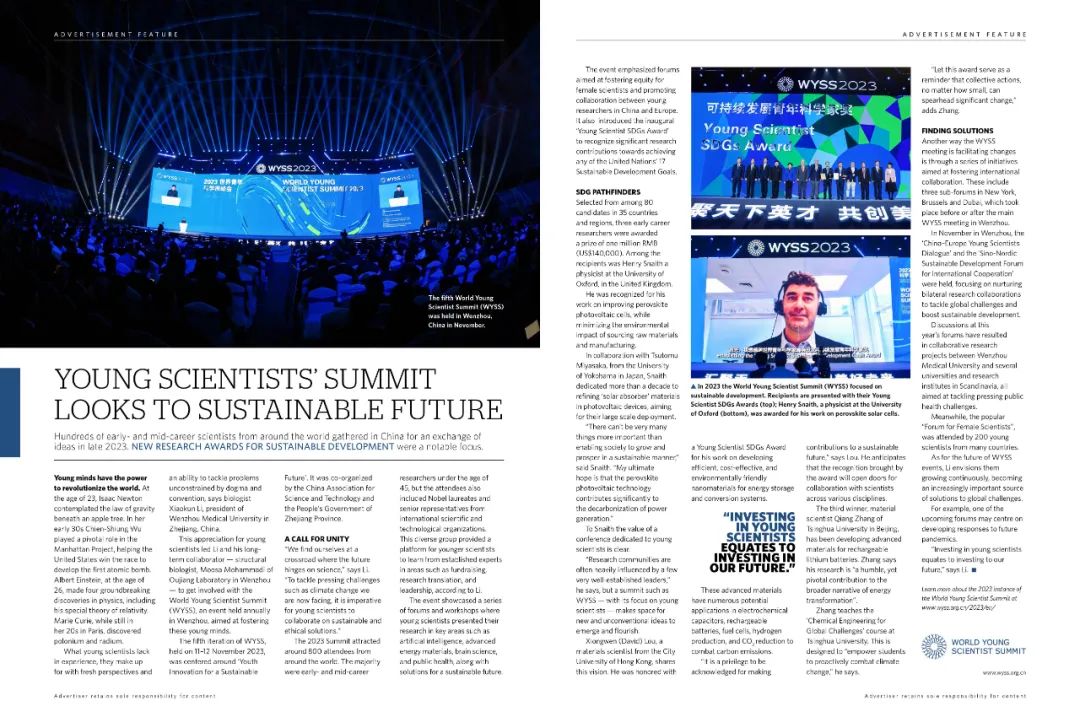
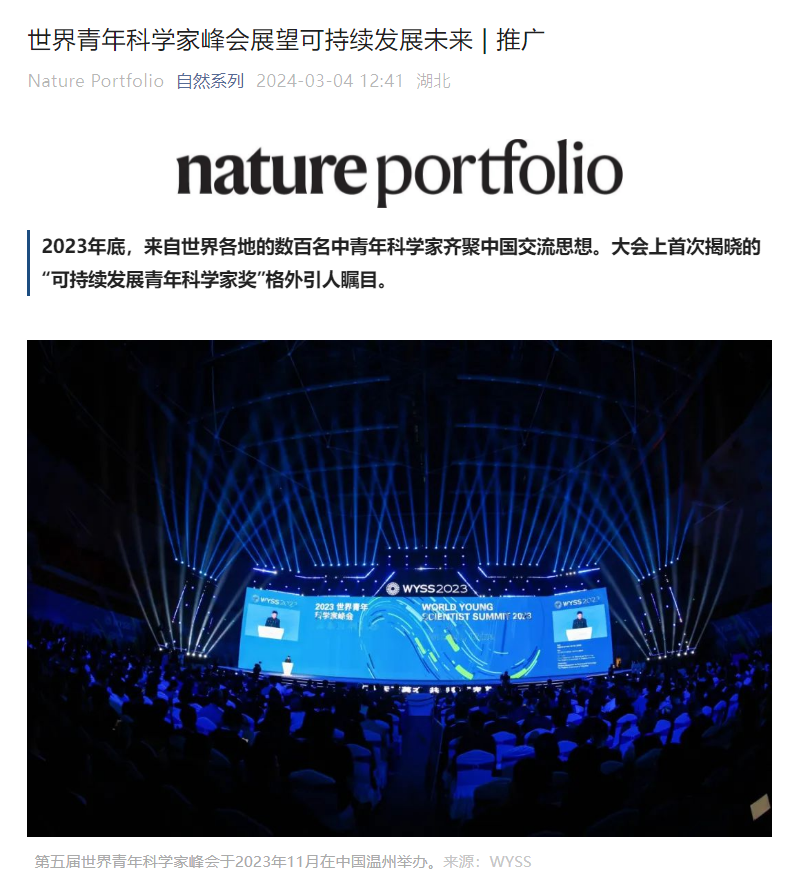
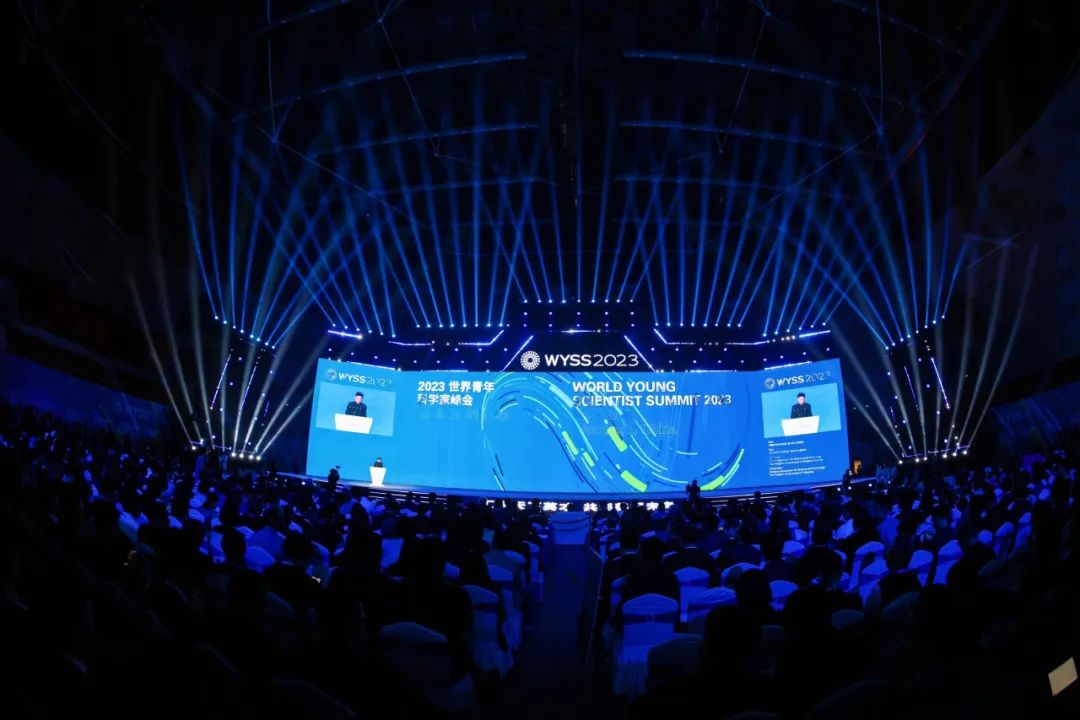

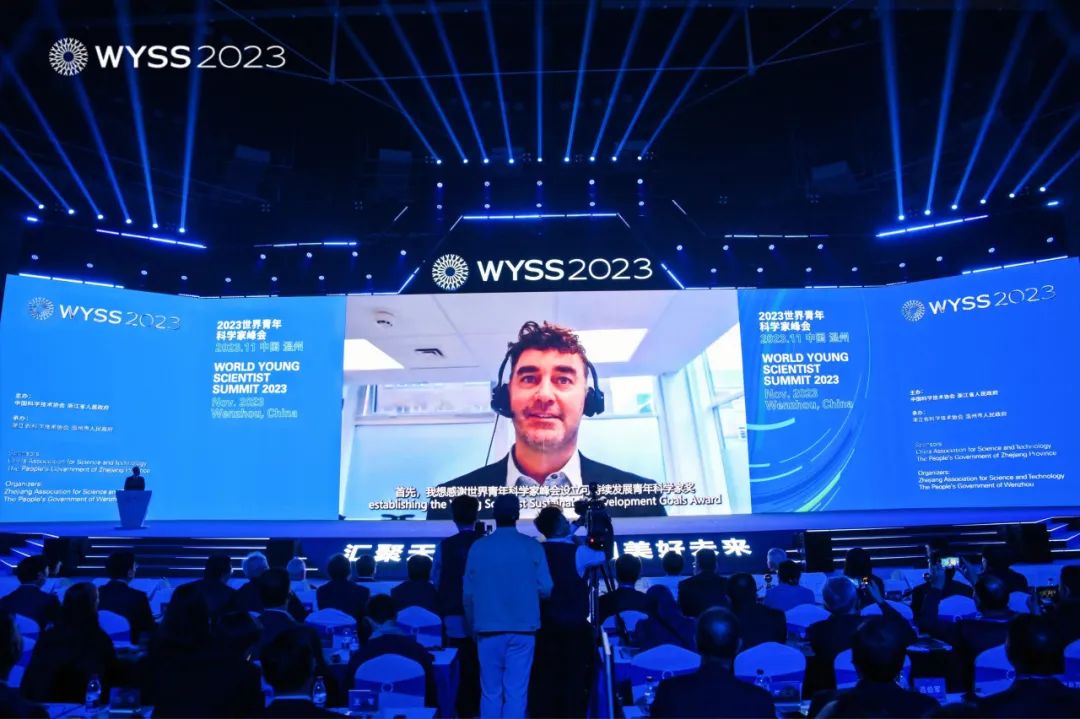
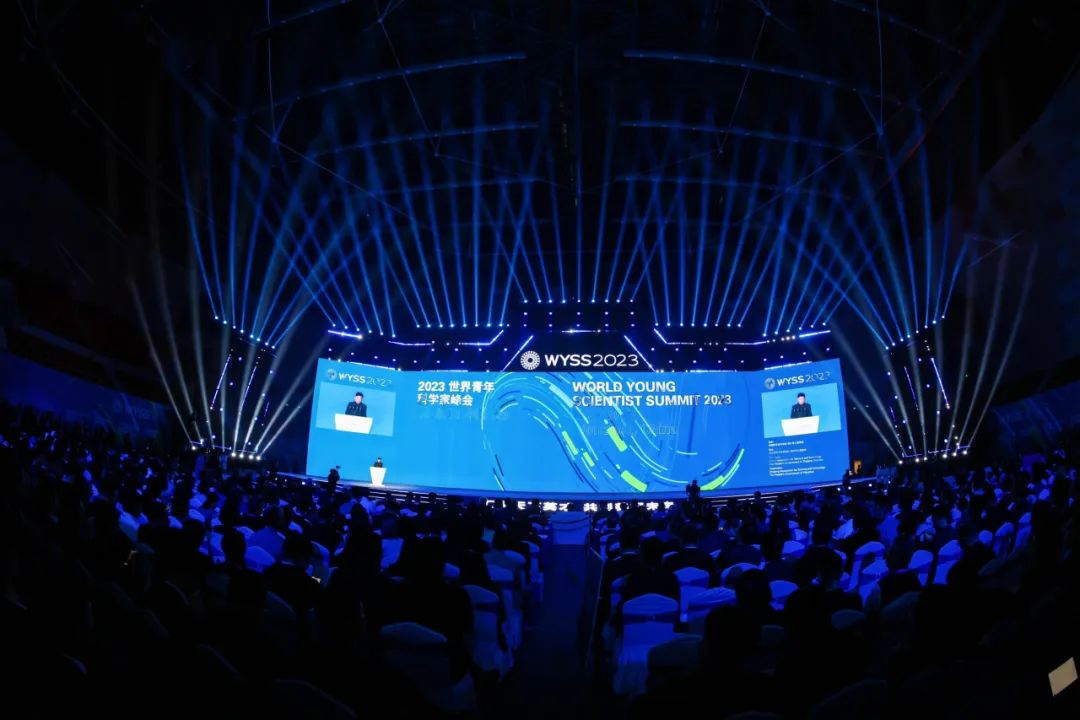
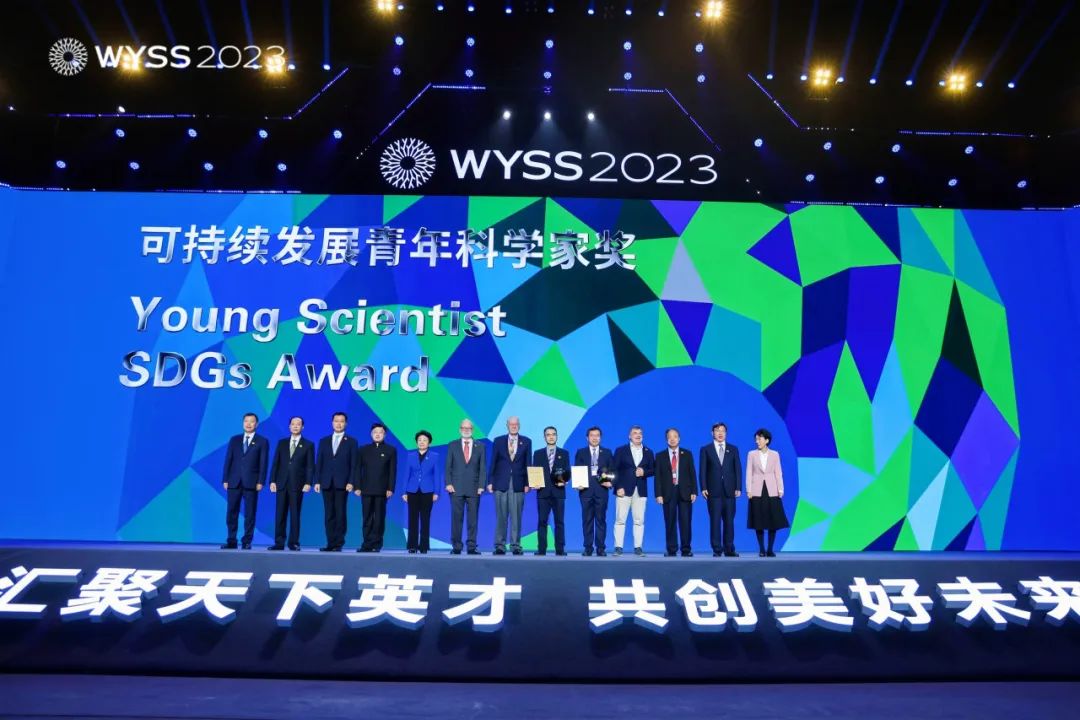
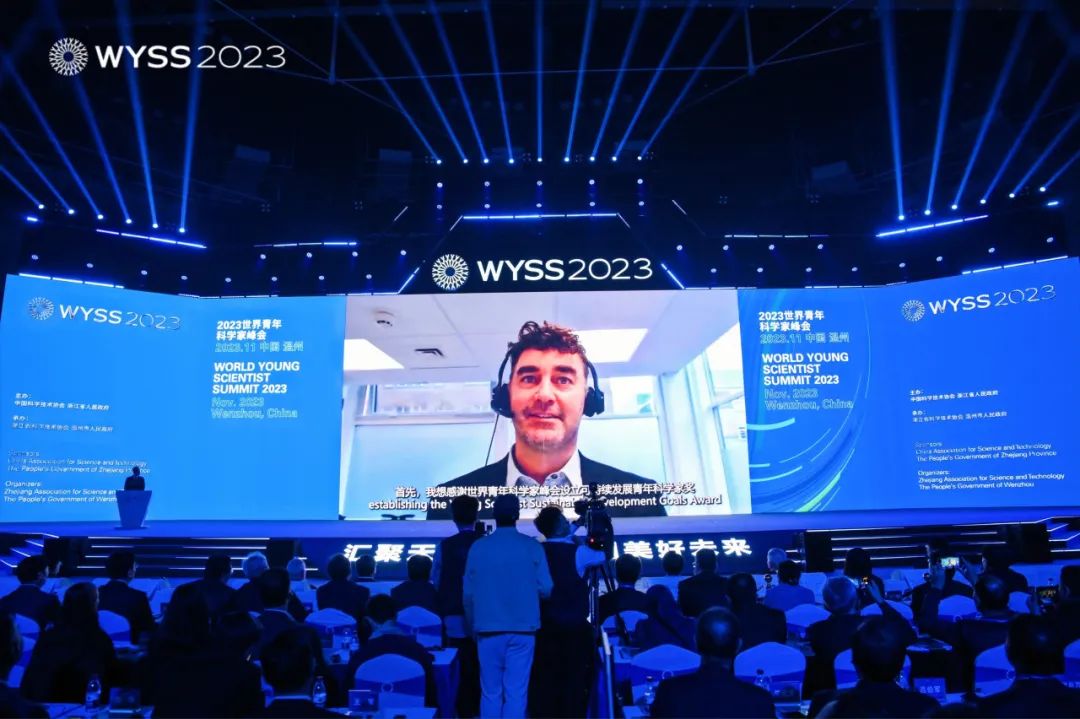

 微信公众号
微信公众号
 下载app
下载app
 京公网安备 11010202008974号
京公网安备 11010202008974号